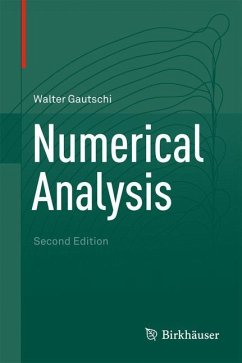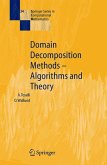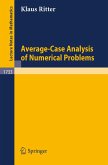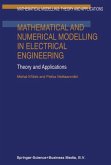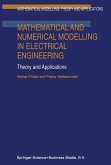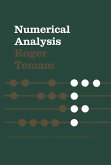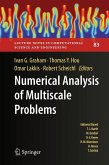Revised and updated, this second edition of Walter Gautschi's successful Numerical Analysis explores computational methods for problems arising in the areas of classical analysis, approximation theory, and ordinary differential equations, among others. Topics included in the book are presented with a view toward stressing basic principles and maintaining simplicity and teachability as far as possible, while subjects requiring a higher level of technicality are referenced in detailed bibliographic notes at the end of each chapter. Readers are thus given the guidance and opportunity to pursue advanced modern topics in more depth.
Along with updated references, new biographical notes, and enhanced notational clarity, this second edition includes the expansion of an already large collection of exercises and assignments, both the kind that deal with theoretical and practical aspects of the subject and those requiring machine computation and the use of mathematical software. Perhaps most notably, the edition also comes with a complete solutions manual, carefully developed and polished by the author, which will serve as an exceptionally valuable resource for instructors.
Along with updated references, new biographical notes, and enhanced notational clarity, this second edition includes the expansion of an already large collection of exercises and assignments, both the kind that deal with theoretical and practical aspects of the subject and those requiring machine computation and the use of mathematical software. Perhaps most notably, the edition also comes with a complete solutions manual, carefully developed and polished by the author, which will serve as an exceptionally valuable resource for instructors.
"The book reads like an unfolding story... Topics are motivated with great care and ingenuity that might be given to establishing the drive behind characters in a good novel... Clarity is never sacrificed for elegance. Above all, the pace is always lively and brisk, the writing concise, and the author never lets the exposition bog down... [The book] successfully conveys the author's interest and experience in the subject to the reader." -- SIAM, review of the First Edition
The book reads like an unfolding story... Topics are motivated with great care and ingenuity that might be given to establishing the drive behind characters in a good novel... Clarity is never sacrificed for elegance. Above all, the pace is always lively and brisk, the writing concise, and the author never lets the exposition bog down... [The book] successfully conveys the author's interest and experience in the subject to the reader. -SIAM, review of the First Edition
From the reviews of the second edition:
"This is the second updated edition of the 1997 version. It's a classical book on numerical analysis that can be used as course notes. ... The second edition has updated references and notes ... . The major change is however that now solutions to all exercises and computer assignments are available. ... Conclusion: one of the better handbooks on the market today, based on several decades of teaching experience of the author. It is an excellent tool for teaching a classical numerical analysis course." (A. Bultheel, The European Mathematical Society, February, 2012)
From the reviews of the second edition:
"This is the second updated edition of the 1997 version. It's a classical book on numerical analysis that can be used as course notes. ... The second edition has updated references and notes ... . The major change is however that now solutions to all exercises and computer assignments are available. ... Conclusion: one of the better handbooks on the market today, based on several decades of teaching experience of the author. It is an excellent tool for teaching a classical numerical analysis course." (A. Bultheel, The European Mathematical Society, February, 2012)

